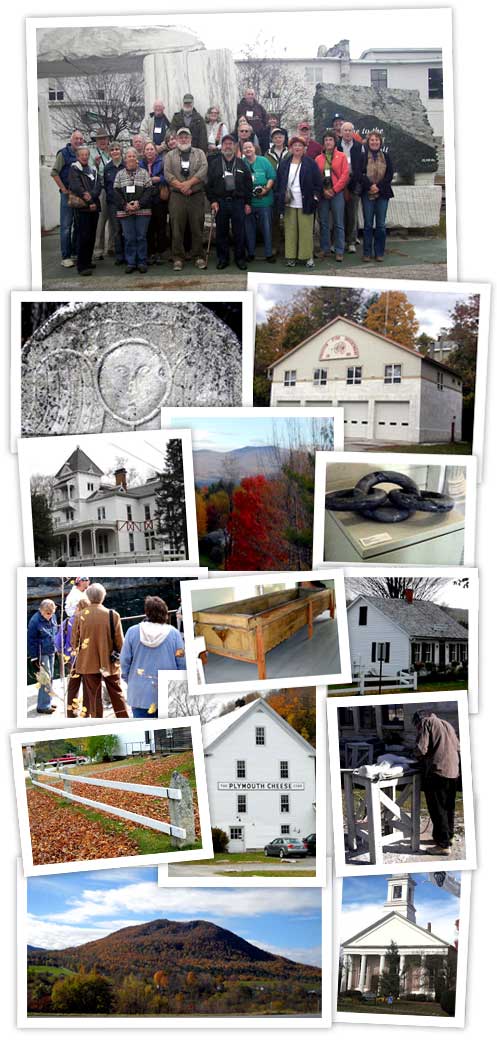Memory and Landscape on New England's Northern Frontier
We're pleased to share these images from last year’s conference. Click any image for a larger view and/or to view the photos as a slide show. (Use the arrow keys on your keyboard to move through the slideshow, if you wish.) When you’re done perusing these photos, we have even more for you, here.

The 2010 Conference included a National Register of Historic Places Workshop conducted by James Gabbert, of the National Register of Historic Places, as well as a day-long field trip. A Marble Valley field trip headed west to Proctor (including the Vermont Marble Museum); to West Rutland (including its cemetery and the Vermont Carving Studio); to Hubbardton, a Revolutionary War battlefield; and to Castleton Village (including Higley House, the museum of the Castleton Historical Society). The Saturday Town & Village tour explored the region to the east of Castleton and included stops at Shrewsbury (Pierce's Store), at Cuttingsville (the Bowman Estate), at the Shrewsbury Historical Society (housed in a 19th century Methodist Church and its cemetery),and at Mount Holly for a barn tour.
Return to top
PAS: APAL members pose in front of the Vermont Marble Museum, Proctor, VT.
The tympanum of a Vermont marble gravestone carved with a late 18th-century soul effigy, Castleton Cemetery, Castleton, VT.
Marble fire station, Proctor, VT.
The John P. Bowman House, constructed in 1882 in Cuttingsville, VT, combined elements of Italianate and Queen Anne with the architectural Stick Style.
Western Vermont in October.
Traditional wooden chain carving translated into Vermont marble, Vermont Carving Studio and Sculpture Center, West Rutland, VT.
PAS: APAL members visit an old, water-filled marble quarry on the property of the Vermont Carving Studio and Sculpture Center, West Rutland, VT.
An original 1890 cheese vat used at the Plymouth Cheese Corp. in Plymouth Notch, VT.
The Aldrich House was constructed in the early 1800s in Plymouth Notch, VT. The house is a good example of connected New England farm architecture.
Granite and wood fencing, Plymouth Notch, VT.
The Plymouth Cheese Factory, Plymouth Notch, VT, was built in 1890 by President Calvin Coolidge's father and three other local farmers.
An artisan carving Vermont marble at the Vermont Carving Studio and Sculpture Center, West Rutland, VT.
Western Vermont in October.
The Federated Church of Castleton, Castleton, VT, was designed by Thomas Reynolds Dake and built in 1836 as a Congregational Church. It was one of the earliest Vermont churches to combine Greek Revival style architecture with Gothic Revival style.

